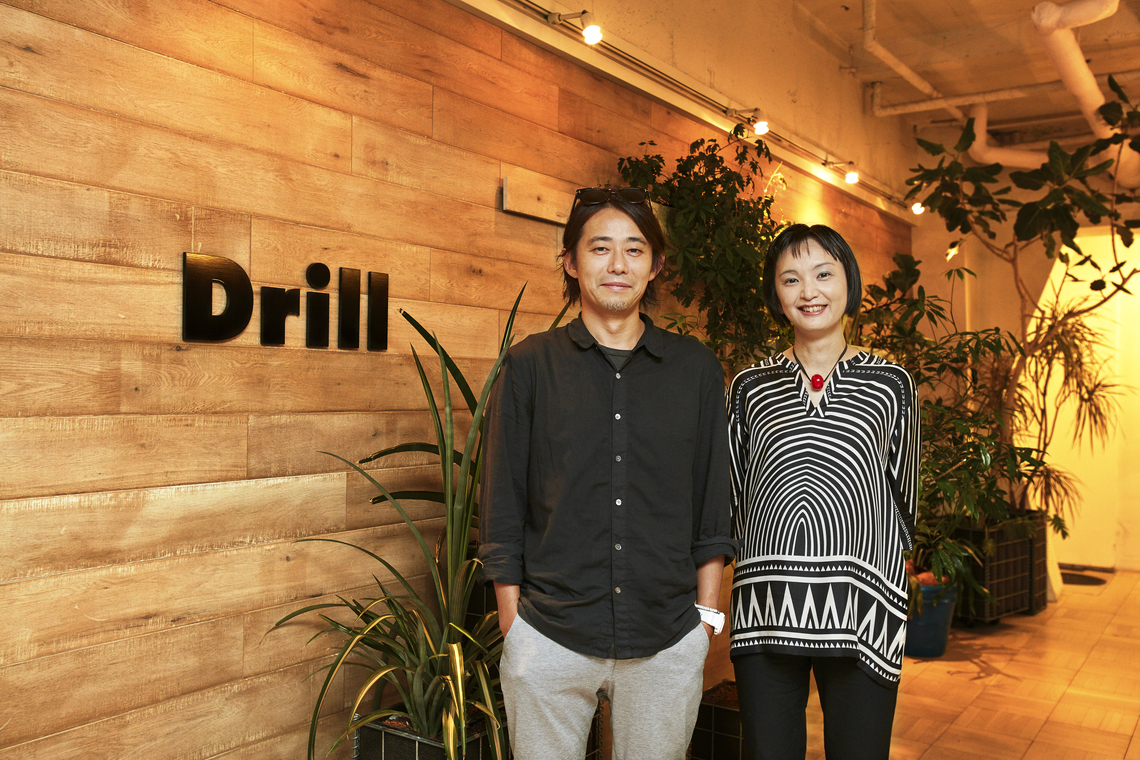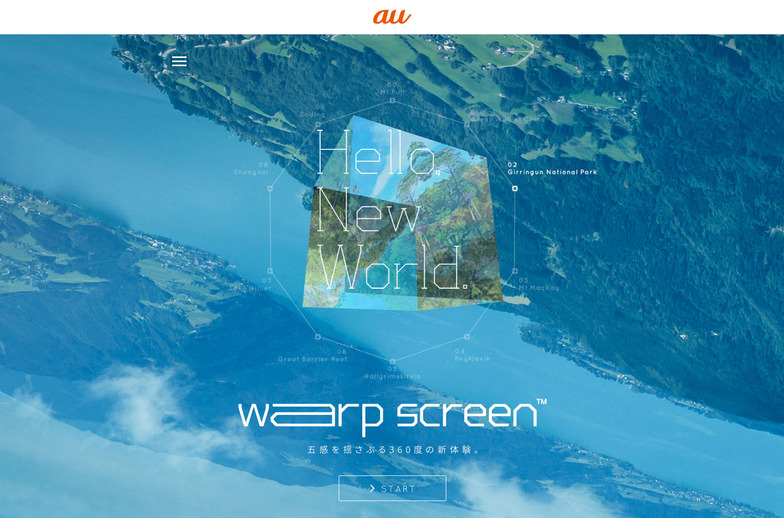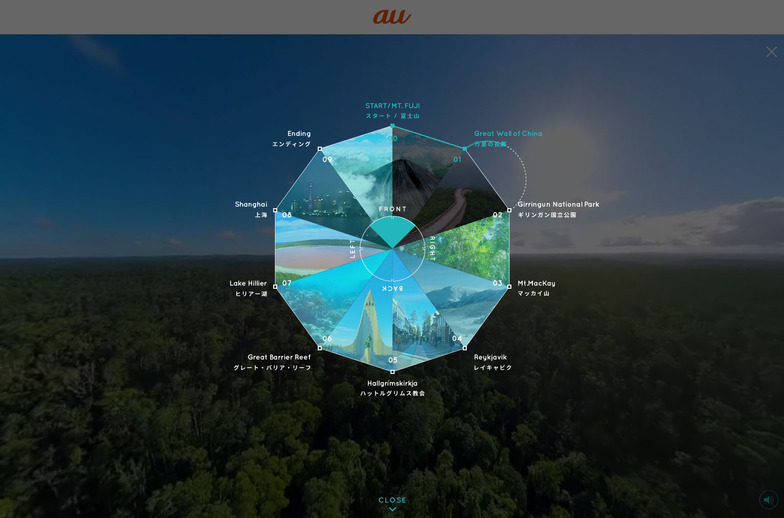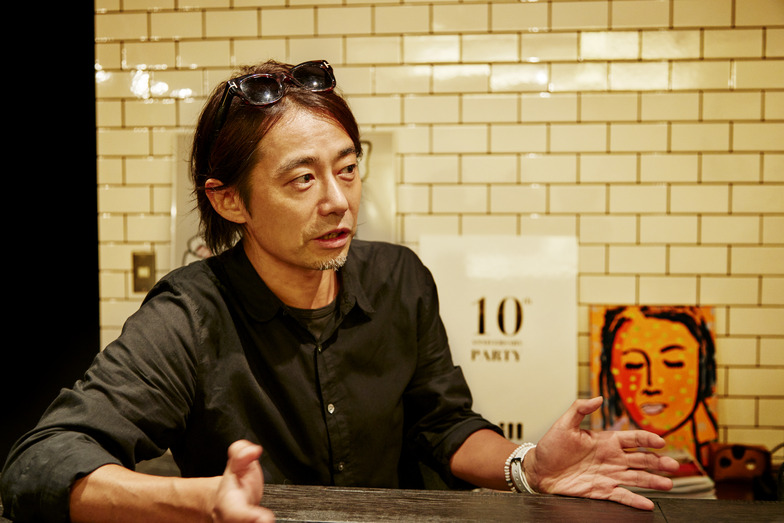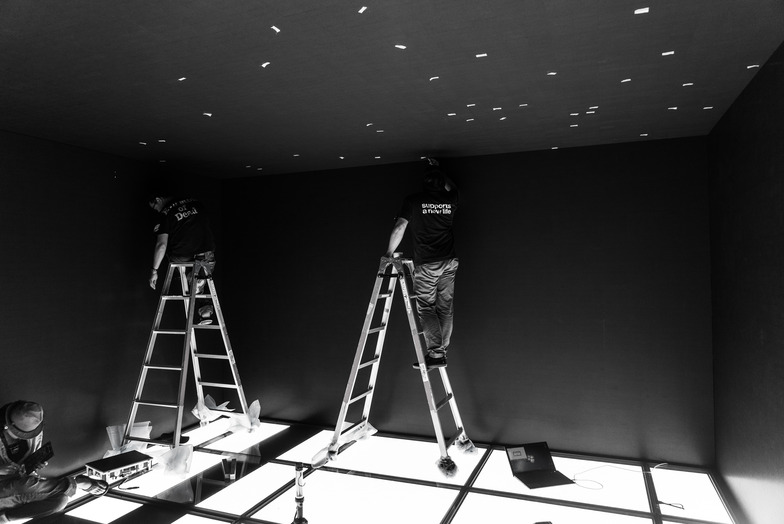From August 28th to 30th, KDDI's special event "Hello, New World. warp cube" was held at Tokyo Midtown in Roppongi. Following the event, Naoya Hosokawa, Creative Director at Drill Inc. who oversaw this project—which offered a roughly 10-minute 360-degree virtual trip flying through the world's most spectacular landscapes—and Reiko Goto from Dentsu Inc. engaged in a discussion at Drill Inc.'s offices.
Interview & Editing: Aki Kanahara, Dentsu Inc. Event & Space Design Bureau
A new experience that stirs the senses, for everyone
Goto: Mr. Hosokawa had actually started planning this project quite a while before I joined. How did the project initially begin?
Hosokawa: KDDI approached Drill Inc. wanting to implement a promotion where people could experience their brand world as part of their new branding. We proposed, "Let's create a promotion where everyone—not just digital natives, but everyone from children to seniors—can experience au's advanced brand world using communication technology and digital tools!" That's how it was decided.
Goto: The core challenge was communicating, as a brand, that smartphones and communication power can open up new worlds, experiences never seen before. So, rather than directly showcasing communication technology, it felt more like a campaign aimed at conveying the message that even more new worlds are about to unfold.
Hosokawa: No, we definitely used communication technology. The images move because you operate the smartphone via the connection. Of course, the smartphone's accelerometer is used, and you get calls from characters in the video, or the smartphone's flash blinks in sync with the images.
The event involves experiencing a roughly 10-minute 360-degree virtual trip flying through the world's most spectacular scenery inside a massive cube—6.15 meters tall and 8.1 meters wide—surrounded by LED displays. When participants simultaneously raise their smartphones inside the warp cube, they warp to breathtaking locations worldwide, enjoying bird's-eye views captured using drones.
Goto: For filming, we visited over 10 locations—including the Great Wall of China, Reykjavik (Iceland), the Great Barrier Reef (Australia), and Mount Fuji—all to create experiences never before seen in this warp cube.
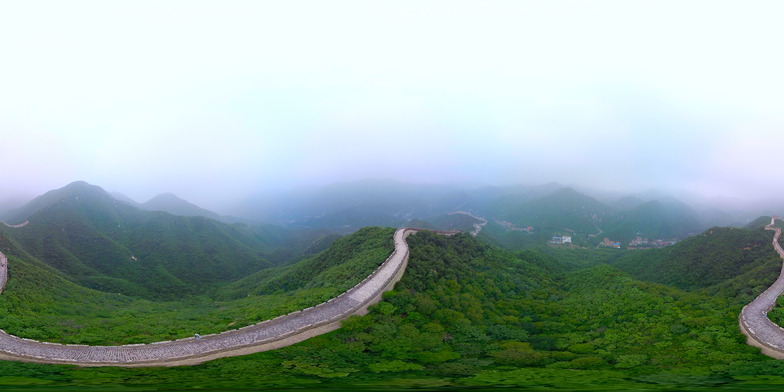
China: The Great Wall
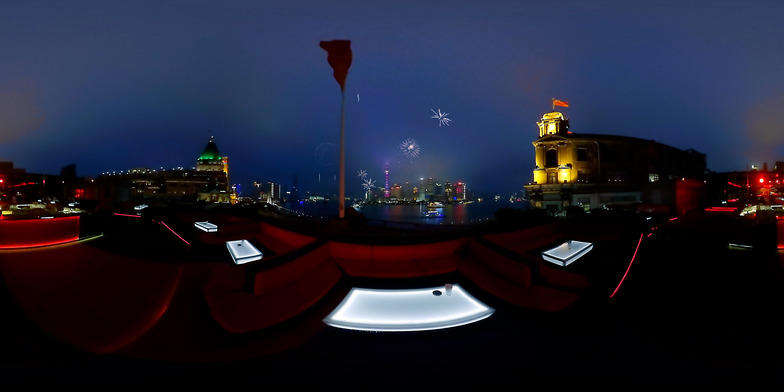
China: Shanghai
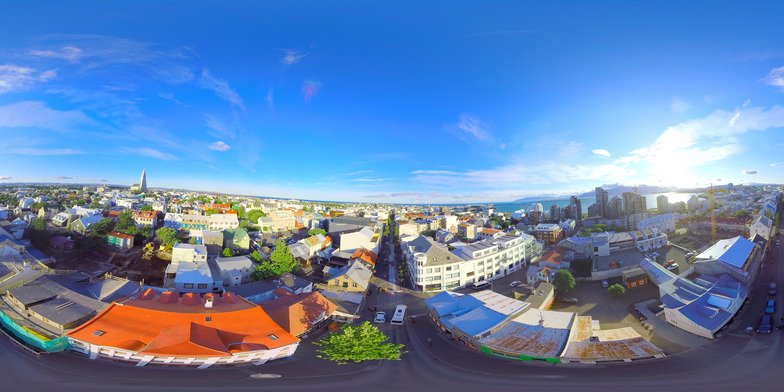
Iceland: Reykjavik
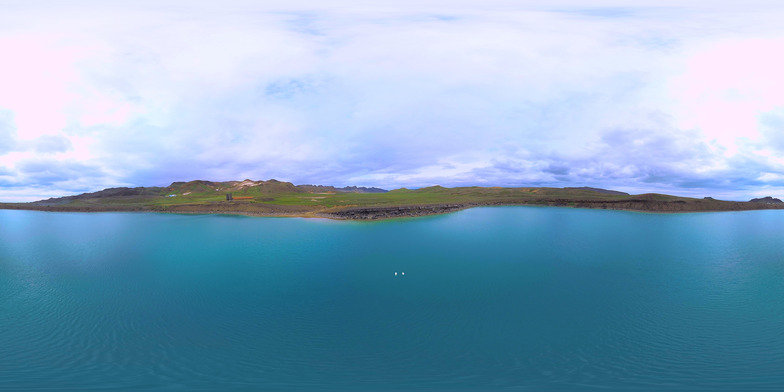
Iceland: Lake Krafla
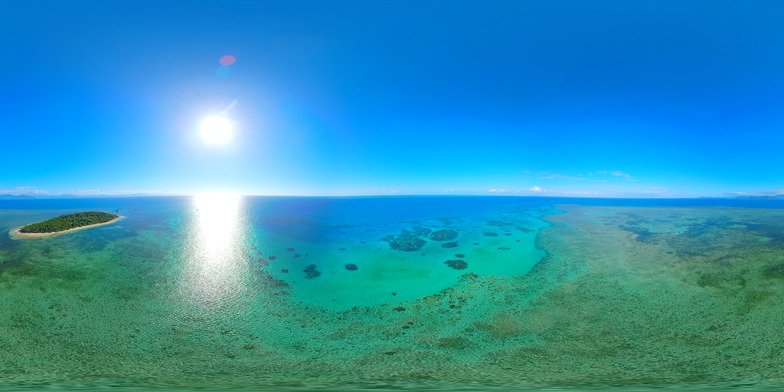
Australia: Great Barrier Reef
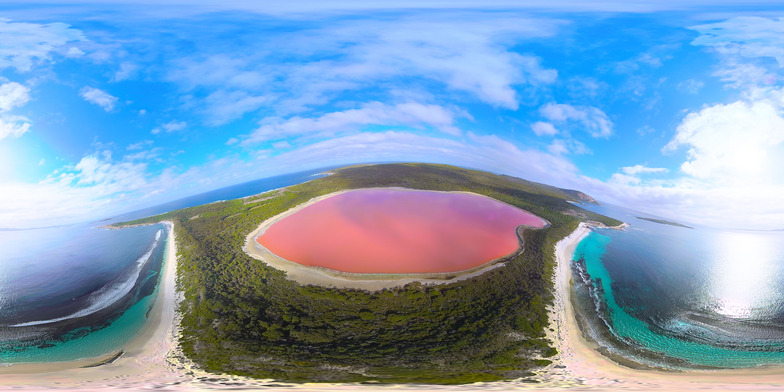
Australia: Lake Hillier
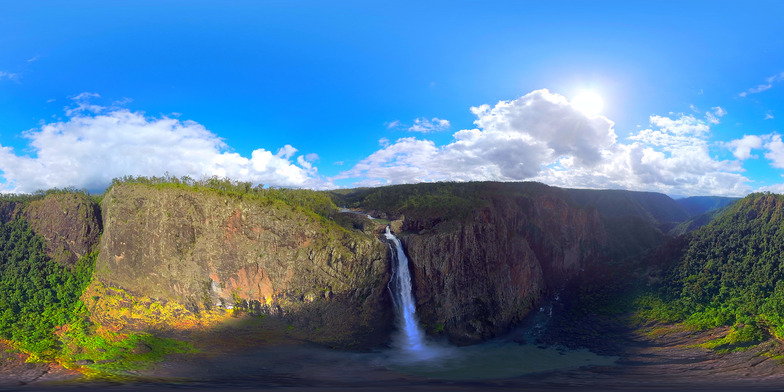
Australia: Waraman Falls

Japan: Mount Fuji
Hosokawa: We shot in three countries, but we didn't go there with the intention of visiting those specific places. Instead, we picked out all the necessary scenes we needed—nightscapes, oceans, snow-capped mountains, starry skies, and more—and then searched the ends of the earth for the most efficient locations to capture them all. We determined that China, Iceland, and Australia offered the most efficient route, so teams flew out simultaneously to shoot. We visited about 15 locations.
Goto: Also, creating a room with LEDs for a 360-degree interactive video experience—it's something you can imagine in your head, but it wasn't really done in practice.
Hosokawa: We were the first in the world to do it with live-action. We didn't go with VR or head-mounted displays this time because we wanted it to be more than just a solo experience. We wanted people to step inside together with friends or family, sharing the experience to make it deeper. It's important that everyone can share the "Wow, this is amazing!" moment together, rather than everyone just getting lost in their own immersion.
Goto:With VR head-mounted displays, you can't even see your own hands, right? It's such an intensely personal experience that even if someone is right next to you, it becomes completely irrelevant. The immersion is incredible, though.
Hosokawa:This time on the web, we're also trying something new: letting users spin the 360-degree video around freely, so they can see behind and in front of the footage. This feels like quite a "new experience" too.
How to convey au's brand slogan: "New Freedom."
Goto: The key point is why KDDI should be doing this event. In that sense, we really thought hard about how to connect the brand with the experience.
Hosokawa: au champions the brand slogan "New Freedom." Essentially, KDDI isn't just a telecommunications company. I believe the power of communication, and new devices like smartphones, can expand human potential far beyond just talking on the phone, sending emails, or taking photos. I believe these tools should let us experience things we've never seen or experienced before. We wanted to embody that vision through this event.
If people could instantly go to places they've never been using their smartphones, I thought they'd feel, "Wow, this thing I always hold in my hand has the potential to do so much more exciting stuff!"
Goto: For the general public, KDDI is probably just a "phone company" by default, right? But this time, we wanted to show communication as something with broader possibilities.
Hosokawa: Exactly. We wanted to expand that vision.
Overcoming the challenges and difficulties of drone filming
Goto: Since we're on the topic, could you tell us about the drone filming?
Hosokawa: It was a constant cycle of struggle and miracles.
Goto: You can't fly drones in Tokyo right now, can you? And this time, many locations were World Heritage sites or natural heritage areas.
Hosokawa: Exactly. We couldn't get filming permits for many locations.
Goto: First off, there are probably a lot of places where you just can't fly them. People ask, "What if it crashes?"
Hosokawa: Drones become impossible to control in strong winds.
Goto: That's why, during the initial editing, the world was constantly shaking.
Hosokawa: Exactly. After that, we applied stabilizer to each frame, processing the footage to make it fly smoothly and seamlessly.
Hosokawa: Plus, LEDs with that kind of high resolution don't exist in Japan. We had to start by getting them in the first place. Then we had to simulate what kind of imagery would feel best to humans. So we actually rented a large room in Aoyama and set up a test lab there.
Goto: We spent over a month in that lab, trial and error, trying all sorts of things, right?
Hosokawa: We had to create the footage, bring it there, stand inside it ourselves, and decide things like, "Even the slightest shake would make this feel really sickening," or "What kind of movement looks most like jumping and feels best for humans?" Only after settling that could we go to the actual shoot.
And then, once we got there, we flew drones equipped with six cameras for 360-degree filming. But the thing is, at these breathtaking locations, the wind is always incredibly strong (laughs). It was a battle against the wind! Wind means the drone shakes.
Goto: You can actually see the shaking pretty realistically in the footage, right?
Hosokawa: When you're in shaky footage, it feels incredibly uncomfortable from a human perspective.
So we fly the drone as steadily as possible. We even calculate how to correct any shakiness later. Then there's the flight path. We simulate everything, like how to fly it so it looks like a person jumping and flying through the air.
Plus, unlike TV production where they say, "Don't come back until you get the shot," we don't get two or three months. We have brutal schedules, shooting one location in just one or two days.
Working within these tight schedules, battling the wind and weather, was incredibly tough. We spent nights on boats, nearly got stranded in the snowy mountains, and hauled equipment for miles along the Great Wall. In editing, we had to stitch footage from six cameras into seamless 360-degree video, making sure the seams looked natural – that was extremely difficult. We did this frame by frame.
Using CG and experiencing it through VR or a head-mounted display would have been easier, but we were determined to truly transport participants to the world's most breathtaking locations, so we insisted on live-action footage. Doing this on such a scale with live-action was a world first.
After the footage was complete, we then had to build the interaction linked to smartphone motion. If everyone shakes their phone, it jumps; if no one shakes, it doesn't jump. Figuring out how much combined shake would trigger a jump, or the optimal delay after shaking for the best feel, and testing what happens upon landing—all that was incredibly challenging. But deadlines loomed, we still had to build the warp cube, and testing was required... (laughs). It was a miracle project—professionals gathered, pulling all-nighters night after night, trial and error, and somehow we made it.
New World: Aiming for New Developments in the New Experience Space
Goto: Both customers, local residents, and stakeholders often told us it was such a waste that it only lasted three days. Since it's an experience within a single warp cube, wouldn't it be great if we could recreate the whole thing somewhere else, like a pop-up? Imagine a door transcending time and space suddenly appearing right in the city where you live.
Hosokawa: If only we had the warp cube. But the warp cube itself is essentially a building. You can't just load it onto a truck, zip it over, and plop it down. It's not that simple.
Goto: That hurdle was incredibly high this time too. Even for just three days, a building is a building. Even if it's a space for a virtual experience, the architecture is real.
Hosokawa: This time, we dug deep into au's tagline, "New Freedom." What is freedom? Seeing things you've never seen before, feeling things you've never felt before—isn't that freedom? To convey that not just to young people, but to everyone from kids to grandparents, it couldn't be difficult. Technology isn't just for a select few; true freedom is when people of all ages can use it seamlessly and easily, without any barriers.
Goto: Exactly. The participant action was simple: just shake your smartphone. We deliberately kept it as simple as possible. Participants didn't comment on the amazing technology; instead, they said things like "I want to go traveling" or "I felt very genuine emotions." In other words, this might actually prove that the technology was used so naturally, its presence went unnoticed.
Hosokawa: There was a huge line, after all.
Goto: And in the rain, too.
Hosokawa: We want to take everyone to the next "New World" as soon as possible!


